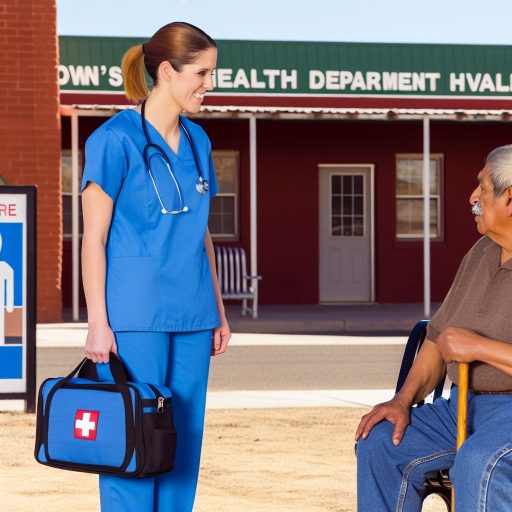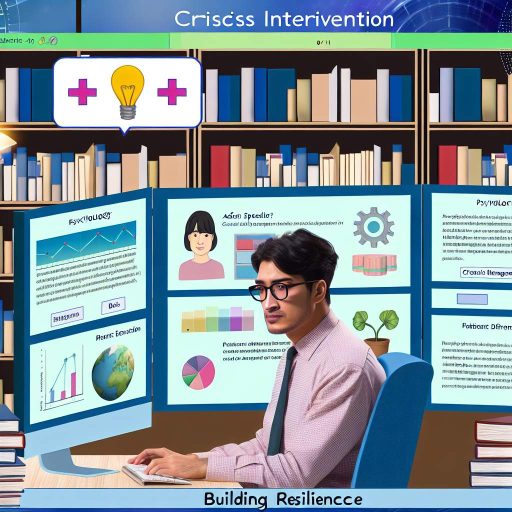Introduction:
Community health workers play a vital role in promoting public health.
They deliver essential health services to underserved populations.
With the advancement of technology in healthcare, there has been a significant shift.
This shift integrates technology tools to enhance healthcare delivery.
This blog will delve into the impact of technology on improving the efficiency of community health workers.
Training and Education:
Technology can improve CHWs training by offering interactive virtual simulations and online courses.
Virtual training programs provide flexibility for CHWs to learn at their own pace.
Online resources like videos, webinars, and modules can enhance CHWs knowledge and skills.
Accessible and up-to-date information through technology ensures CHWs are well-informed.
CHWs can access the latest guidelines, protocols, and research findings easily.
Technology enables CHWs to stay current with best practices and emerging trends in healthcare.
Data Collection and Management
With the advent of technology, community health workers (CHWs) now have access to various tools and resources that can greatly enhance their efficiency in delivering healthcare services.
One of the key areas where technology has made a significant impact is in data collection and management.
Streamlining Data Collection: Technology plays a crucial role in streamlining the data collection process for CHWs.
By using digital tools and devices, CHWs can collect and record data more efficiently and accurately.
This not only saves time but also reduces the chances of errors that may occur when using manual methods.
Mobile Apps and Electronic Health Records: Mobile apps and electronic health records have revolutionized the way CHWs capture and manage patient information.
These tools allow CHWs to access patient records on the go, enabling them to provide more personalized care and make informed decisions quickly.
Importance of Data Accuracy: Data accuracy is paramount in healthcare settings as it directly impacts the quality of care provided to patients.
By utilizing technology for data collection, CHWs can ensure that the information they gather is reliable and up-to-date, leading to better health outcomes for the community.
Transform Your Career Today
Unlock a personalized career strategy that drives real results. Get tailored advice and a roadmap designed just for you.
Start NowData Security: In the healthcare sector, protecting patient data is a top priority.
Technology can help CHWs maintain the security and confidentiality of patient information through encryption, secure login credentials, and regular data backups.
This ensures that sensitive data remains protected from potential breaches or cyber threats.
- Technology can streamline data collection for CHWs by automating the process.
- Using mobile apps and electronic health records allows CHWs to quickly capture and access patient information.
- Data accuracy is crucial as it ensures CHWs make informed decisions based on reliable information.
- Security measures must be in place to protect sensitive patient data from unauthorized access.
Discover More: Impact of Case Managers on Community Well-being
Communication and Coordination:
Technology enables real-time communication and coordination among CHWs and healthcare providers.
Telehealth platforms allow CHWs to consult with healthcare professionals remotely.
Digital communication tools streamline information sharing and improve healthcare delivery.
Benefits of Communication Technology:
Improved access to expert advice for CHWs in remote or underserved areas.
Facilitates quick referrals and consultations for complex cases, ensuring timely interventions.
Enhances coordination between CHWs and healthcare facilities, leading to better patient outcomes.
Challenges of Digital Communication:
Connectivity issues in rural or remote areas can hinder real-time communication.
Privacy and security concerns surrounding the use of digital platforms for confidential patient information.
CHWs may require training to effectively use telehealth tools and ensure accurate data transmission.
Teleconferencing and Remote Consultations:
Teleconferencing tools allow multidisciplinary teams to discuss cases and collaborate on treatment plans.
Remote consultations reduce the need for CHWs to travel long distances for referrals or specialist advice.
Telemedicine platforms enable virtual check-ins and monitoring of patients, improving continuity of care.
Gain More Insights: Understanding the Role of a Child Welfare Specialist
Remote Monitoring and Telemedicine:
Technology enables remote monitoring of patients’ health status efficiently.
Telemedicine plays a crucial role in providing healthcare services to underserved communities.
Showcase Your Business Today
Reach thousands of readers actively exploring professional services. Publish your business profile and grow your audience now.
Publish NowTelehealth interventions have proven effective in improving patient outcomes significantly.
Remote monitoring through technology solutions has revolutionized the way community health workers and healthcare professionals provide care to individuals.
This is especially true in remote or rural areas where access to healthcare facilities may be limited.
Through the use of various devices and applications, community health workers can now remotely track and monitor patients’ vital signs, medication adherence, and overall health status.
This enables them to intervene promptly when necessary.
Telemedicine, on the other hand, has bridged the gap in healthcare services for underserved communities.
It leverages technology to connect patients with healthcare providers regardless of their location.
This has been particularly beneficial for individuals living in rural areas or those with mobility limitations.
It allows them to receive timely medical advice, prescriptions, and even follow-up consultations without the need to travel long distances.
Studies have shown that telehealth interventions lead to improved patient outcomes.
These outcomes include better disease management, increased medication compliance, and reduced hospital readmissions.
By utilizing telemedicine tools such as video conferencing, remote monitoring devices, and secure messaging platforms, community health workers can effectively engage with patients.
They can provide education and support self-management of chronic conditions.
Overall, remote monitoring and telemedicine have significantly enhanced the efficiency and effectiveness of community health workers in delivering healthcare services.
By harnessing the power of technology, these professionals can expand their reach, improve patient outcomes, and ultimately contribute to the overall well-being of the communities they serve.
You Might Also Like: Key Benefits of Hiring a Life Skills Instructor

Decision Support Systems:
Technology can provide decision support tools for CHWs in making clinical decisions.
Algorithms and predictive analytics can guide treatment plans for community health workers.
Evidence-based practices are significant in healthcare decision-making for better outcomes.
Decision support systems play a crucial role in enhancing the efficiency and effectiveness of community health workers (CHWs) by providing them with the necessary tools and information to make informed clinical decisions.
These systems leverage technology to offer algorithms and predictive analytics that can assist CHWs in guiding treatment plans for individuals in the community.
By using decision support systems, CHWs can access evidence-based practices that are backed by research and proven outcomes.
This ensures that the care provided to community members is based on the latest medical knowledge and best practices.
Furthermore, decision support systems can help CHWs stay up-to-date with current trends in healthcare and adjust their approach accordingly.
Algorithms and predictive analytics are powerful tools within decision support systems that analyze data and provide insights to CHWs on the most effective treatment strategies for specific health conditions.
By utilizing these tools, CHWs can tailor their interventions to meet the unique needs of each individual, leading to better health outcomes.
Moreover, decision support systems can streamline the decision-making process for CHWs, allowing them to prioritize tasks and allocate resources efficiently.
This helps CHWs manage their workload effectively and ensure that they are delivering high-quality care to all community members in need.
Decision support systems play a critical role in enhancing the efficiency and effectiveness of CHWs by providing them with the necessary tools and information to make informed clinical decisions.
By leveraging technology, algorithms, and predictive analytics, CHWs can improve their decision-making process and deliver evidence-based care to individuals in the community.
Find Out More: Employment Specialist: Crafting the Perfect Job Match
Community Engagement and Outreach:
Technology plays a vital role in enhancing community engagement for Community Health Workers (CHWs).
CHWs can use various platforms like mobile apps to reach a larger audience for health promotion.
Social media serves as a powerful tool for CHWs to disseminate important health information to communities.
Benefits of Technology in Community Engagement:
- Technology enables CHWs to connect with individuals who may not have access to traditional healthcare services.
- Online platforms allow CHWs to conduct virtual health promotion campaigns efficiently.
- CHWs can engage with community members in real-time, addressing their health concerns promptly.
Importance of Cultural Competency in Digital Healthcare Communication:
- Cultural competency is crucial for CHWs when utilizing technology to communicate health information.
- CHWs must understand the cultural beliefs and practices of the communities they serve to deliver effective healthcare messages.
- Technology should be used sensitively to respect diverse cultural backgrounds and beliefs.
Challenges and Solutions:
- One challenge is ensuring that technology-based communication is culturally sensitive and relevant to diverse communities.
- Solutions include providing training to CHWs on cultural competency and tailoring health messages to specific cultural groups.
- Collaboration with community leaders and organizations can help CHWs better understand the needs of diverse populations.
Future Trends in Community Engagement through Technology:
- Advancements in artificial intelligence and machine learning can personalize health messages for individuals.
- Virtual reality technology may provide immersive health education experiences for community members.
- Integration of wearable devices and telemedicine can further enhance CHWs’ ability to engage with communities remotely.
The integration of technology in community health worker (CHW) practices has proven to significantly enhance their efficiency.
Through the use of digital tools such as mobile applications and electronic health records, CHWs are able to streamline their workflow and improve communication with patients.
Moreover, technology enables CHWs to collect and analyze data more effectively, leading to better decision-making and targeted interventions.
This not only benefits individual patients but also contributes to overall community health outcomes.
It is evident that leveraging technological advancements is crucial in empowering CHWs and optimizing their impact on public health.
By investing in technology, healthcare organizations can amplify the capabilities of CHWs and ensure better healthcare delivery to underserved populations.
Showcase Your Business Today
Reach thousands of readers actively exploring professional services. Publish your business profile and grow your audience now.
Publish NowTherefore, it is essential for healthcare organizations to prioritize the adoption of technology to support CHWs in their vital role.
This proactive approach will not only improve the efficiency of CHWs but also contribute to achieving better health outcomes for communities at large.
Additional Resources
The Essentials: Core Competencies for Professional Nursing …
HHS Announces Transformation to Make America Healthy Again …
[E-Books for Sale]
The Big Book of 500 High-Paying Jobs in America: Unlock Your Earning Potential
$19.99 • 500 High-Paying Jobs • 330 pages
Explore 500 high-paying jobs in America and learn how to boost your career, earn more, and achieve success!
See All 500 High-Paying Jobs of this E-Book
1001 Professions Without a Degree: High-Paying American Jobs You Can Start Now
$19.99 • 1001 Professions Without a Degree • 174 pages
Discover 1001 high-paying jobs without a degree! Unlock career tips, skills, and success strategies for just $19.99!




